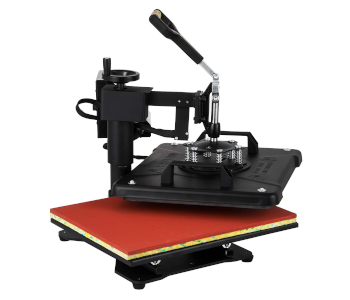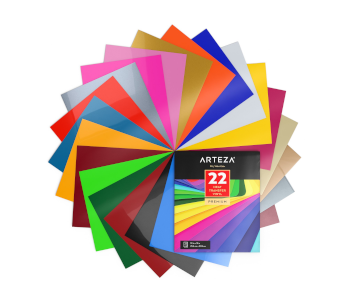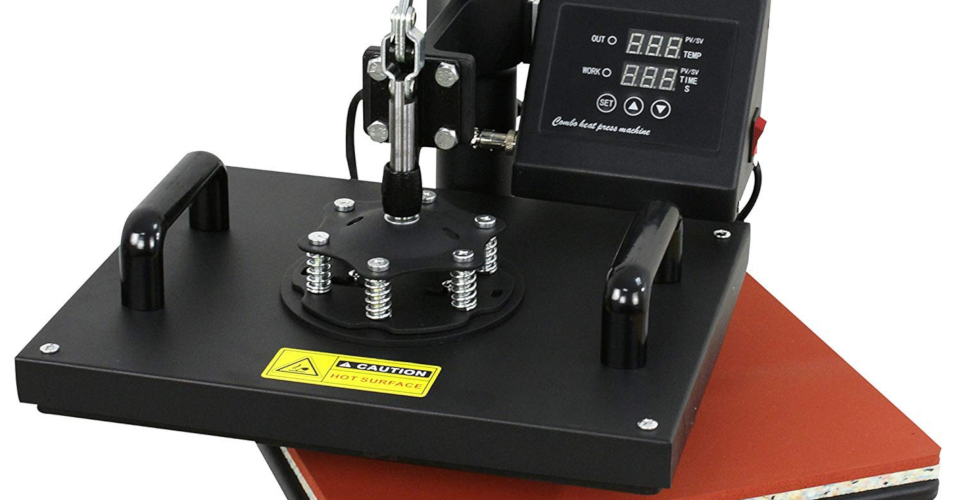What is a Heat Press?
You must have seen t-shirts, hoodies, jerseys, and plenty of other items with logos and designs on them. Those designs are printed on the items using a heat press. A heat press is a machine used to transfer a graphic design on a substrate. The substrate can be any material like glass, ceramic, cloth, etc. A heat press is an easy and technologically simple way of transferring artwork or design onto a substrate of your liking.
More importantly, a heat press allows you the ability to customize items by transferring your own artwork onto an item. You can create your own design, a company logo, or a message, and then transfer it onto clothing, wood, metal, paper, tote bags, ceramic tiles, mugs, etc.
Other technologies that can be used to transfer designs onto a substrate include sublimation and screen printing. However, the quality of work that heat presses can produce may far exceed anything that the alternatives may provide. For example, screen printing can leave a rough texture on a shirt when it is used for multiple color printing. A heat press, on the other hand, will give you a smooth texture.
How a heat press works
A heat press works on the principle of the application of heat and pressure. When the temperature is set at a certain limit and the pressure of the big heating surface is applied for a specific time, what you get is a nice clean imprint of your design on the substrate. Most heat presses have a display where the user can set the temperature and the time for the press.
Temperature

The heat press has two metal plates known as platen. The top platen is the one which heats up electronically. The top plate is, therefore, known as the heat platen. The heat press operates at a high temperature of 400 degrees Fahrenheit. The temperature settings on heat presses generally allow the user to set the temperature between 0 and 500 degrees Fahrenheit. However, 500 degrees will probably burn the design paper or the substrate on which the design is supposed to be transferred. This would definitely be the case if the substrate is a t-shirt.
Time
The time range for most presses is generally between 0 and 999 seconds. Most applications never end up going as high as 999 seconds (which is almost 16 minutes!). Most heat presses happen in around 10 to 20 seconds.
Pressure
The pressure for the heat press is generally adjusted by rotating a knob on the machine. The knob is normally located at the top of the control box or at its backside. On more advanced machines, the pressure may be set digitally rather than by manually turning a knob. In the industry jargon, the pressure is often described in terms of hardness and lightness. For example, certain materials would call for a light-medium press while some would call for a hard-medium press.
Different types of heat pressing techniques

A heat press can also be used with other printing techniques like injection ink and sublimation. When you use a heat press, you will need sublimation ink as well as some transfer paper. You first have to print the graphic design onto a transfer paper vinyl. This transfer paper should be smooth and its surface should be non-absorbent.
The platen or the surface of the heat press which heats up needs to reach a certain temperature after which it enables the ink from the transfer paper to release. The ink needs to transfer from the paper to the substrate and get strongly affixed to the substrate.
This type of heat pressing technique is known as heat transfer vinyl. However, there are other heat pressing techniques such as inkjet transfers, sublimation transfers, plastisol transfers, and rhinestone heat transfers.
Different types of heat press machines
Heat press machines can be primarily classified into two groups, flatbed heat press and rotary heat press.
Within flatbed, one of the most common types of heat press designs is the clamshell design. In this design, the upper plate (heat platen) opens up like a clamshell. There is also a swing-away design in which the upper heat platen swings away from the lower platen when opening up.
A third design under the flatbed group is the draw style press design in which the lower platen pulls out like a drawer while the upper heat platen stays in its place. There is also a vacuum heat press which utilizes air pressure to generate the force that is necessary for transferring a design onto the substrate. Vacuum heat presses can generate pressure with a high psi rating.
The rotary heat presses utilize a roll to generate the temperature and pressure needed to transfer a design onto the substrate. Under the rotary heat press design, there is the roll to roll type, the small format (EST) type, and the multifunctional (EMT) type.
Operating a heat press in your business
Using a heat press for print jobs can be quite profitable. You can use a heat press to create custom design t-shirts for a client. You can produce low quantities of a custom design or you can produce the custom-printed products on a large scale. The heat press machine operates at a fairly high speed which will allow you to print any size of client orders in good time.
If you have a recent model of a heat press which is reasonably advanced technologically, then you can start operating your business right away. You can either set a minimum order quantity or you can open up to customers with all order sizes. With a decent heat press, you can operate your business with a respectable operating profit. There won’t be any fear of taking on single or low quantity orders.
You can opt for an economically priced heat press or you can throw in some extra money and get a heat press with more features. Depending on how much money you spend purchasing your heat press, you will have to print a certain number of items before you recover your fixed (purchasing) cost. Once that cost is recovered, you are only looking at variable costs and your shop operating costs to take care of.
Heat presses are normally quite compact and portable. They can be set in one corner of the shop. The heat press is versatile and it allows you to print on a wide variety of materials. It opens up your services to a wide range of customers who want to customize clothing, mugs, tiles, koozies, mousepads, umbrellas, cotton, ceramic, spandex, and many other things. There are few limits on what kind of orders you can accept with a good heat press.
Automatic, manual, and semi-automatic
A heat press machine can be automatic or manual. An automatic machine will require a little bit of effort from the main operator. A manual machine will require the attention of the main operator and some additional manual labor as well.
Hence, using a manual heat press will be more labor-intensive than using an automatic machine with advanced technologies. Depending on the part of the world where you plan to operate your heat press machine, it may be better to opt for a manual (where labor is cheap) or an automatic (where labor is expensive) machine.
A new type of press, known as semi-automatic heat press, has also entered the market. It has a manual closing process but an automatic electromagnetic opening process.

